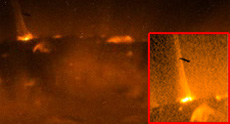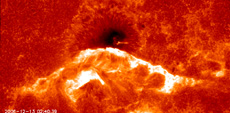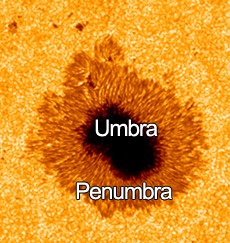

We still don't know much about high-speed solar wind originating from the polar regions because these areas are difficult to observe from Earth. HINODE's Solar Optical Telescope can precisely determine the direction and strength of magnetic field lines on the Sun's surface by measuring polarization. This process has revealed that there are also many very intense magnetic fields at the poles.
HINODE's X-ray telescope has also observed frequent X-ray jets in coronal holes at the Sun's north pole. An X-ray jet is the hottest plasma ejection from the Sun caused by eruptive phenomena such as flares. Prior to this discovery, most X-ray jets were thought to occur in solar active regions but very rarely at the solar poles, where coronal holes exist. Essentially, HINODE discovered that the solar polar regions have many intense magnetic fields, and that phenomena such as X-ray jets are very active. X-ray jets might be the solar wind's source of acceleration, so it is essential that we examine the solar polar regions in detail.

HINODE successfully observed a massive flare, which is a violent explosion on the Sun. A solar flare is understood to happen when the stored magnetic energy in the corona is released by magnetic reconnection. Magnetic reconnection is the process whereby magnetic field lines from different magnetic domains are spliced to one another, changing their connectivity. When this occurs, magnetic field energy is converted into kinetic and thermal energy. Massive flares often take place near sunspot groups, where stored magnetic energy is more intense. This intensity is due to the twisting of magnetic field lines by complex interactions of positive and negative polarity.
HINODE made a number of discoveries by observing massive flares with its optical, ultraviolet and X-ray telescopes in December 2006. It is now possible to simultaneously observe details of dynamical evolutions in magnetic field lines not only in the corona with XRT but also at the solar surface with SOT. At the sunspot group where the massive flare was observed, HINODE captured a strong twisting of magnetic field lines at the solar surface at the location where a negative spot is collided with a positive spot. This resulted in the twisting of magnetic field lines in the corona, can be observed in X-ray coronal movie and the SOT movie of a flare ribbon, which tells the footprints of flaring loops and was moving into a sunspot interior. A flare ribbon is formed when heat or high-energy particles, generated by energy release, flow into the chromosphere. HINODE also observed a supersonic eruption.
Although Yohkoh's observations had taught us that a flare derives from magnetic reconnection, the details of the process - how magnetic reconnection takes place - had not been explained. A megaflare ejects a great volume of plasma, and can cause serious problems once it reaches Earth, including interference with communication systems, artificial satellites, and astronauts' health. By unveiling the mechanisms of solar flares, we would like to help establish "space weather" forecasting in order to predict the impact of solar wind on the Earth's environment.

A sunspot, or dark spot on the Sun, appears dark because the temperature is lower than its surroundings by about 2000ºC. In theory, because a sunspot contains a very intense magnetic field, it is disturbing plasma motion, attracting large magnetic fluxes. Previous observations have shown that the configuration of sunspots changes daily, and that the number of sunspots also varies in correspondence to the solar activity cycle, which is 11 years long. However, the origin of sunspots has not yet been understood, nor have we solved the mysteries of a sunspot's few days of life and subsequent decay.
The darkest center of a sunspot is called the umbra, and the rest is known as the penumbra. A penumbra has a fringe pattern and plasma outflow. HINODE's noteworthy advantage is its ability to observe sunspot magnetic structure in three dimensions, by observing the magnetic field vectors. A number of conclusions can be drawn from HINODE's observations of sunspot magnetic field structure and the surrounding gas. First of all, penumbrae filaments have different magnetic field inclinations; secondly, hot gas ascends from the inner part of penumbrae; thirdly, a countless number of previously unknown fine chromospheric jets exist above the penumbrae. A fourth observation is that cracks in sunspot umbrae allow hot gas to enter, which is part of the process of sunspot decay. On a fifth note, HINODE has also successfully captured the outflow of broken magnetic field lines around a sunspot.
Various events are therefore occurring at or near sunspots, including flare explosions. Certainly uncovering sunspot structure is critical to better understanding solar activity, the origin of sunspots, and the causes of the 11-year solar cycle.
*To view the video captured by HINODE, click here.
[HINODE/the National Astronomical Observatory of Japan]




